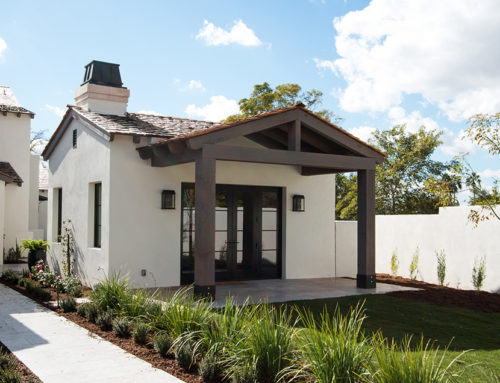Lately food halls like Chelsea Market in New York City, Ponce City Market in Atlanta, Grand Central Market in Los Angels have been garnering lots of attention in the commercial real estate space. Just what is a food hall anyway, and why are they becoming so popular?
What is a food hall?
There is not necessarily a set definition on what a food hall is. In general, it is a collection of local curated vendors with focus on authenticity and quality. You tend to see less national chains in these kind of establishments. Some call it a much more upscale food court or if food trucks moved indoors. I like to think of it more similar to co-working spaces, where you have a dedicated space to get what you need done along with shared common area space. In this case the dedicated space is the individual kitchens and shared common area is the seatings.
In general, food halls are kind of broken out by large vs smaller neighborhood ones and they sometimes take the form of a single brand or operator like Eataly or Time Out, but most of the time they tend to be multi-tenant.
Why is Food Hall So Hot Right Now?
The biggest driver is because we’re spending more money on dining out. The Millennials especially seek for more experiential pleasures and food is a great, natural, and frequent outlet. The second part is the build cost. For both the landlord and tenant alike, it takes quite a bit of money to build out a space, I’d say roughly $300/sf in the Bay Area. If a developer can incur a little bit more hustle but fit in more tenants and increase the net income of a property it could make a lot of financial sense. Many developers are also using food halls as way to set themselves apart while providing amenities to their residential or office tenants in their mixed-use developments.
For the tenant or business operators it’s similar to cloud computing’s to shift CapEx to OpEx. Instead of getting a much bigger loan for the build out of your restaurant, often time the developer takes care of all that but off set it in the form a higher rent. However, the rent you pay at the end of the month comes to be about the same because as the business owner you’re now responsible for much less space as seating spaces or parking overlaps with other tenants that are different use as you or busy at a different time. Often case the smaller footprint also means less staffing and operating expenses, especially with minimum wage rising you can see the appeal to business owners.
Food for thought
For our August Meetup, I was glad to have Robert Hindman and Victoria Irvine-Brown from Los Altos Community Investments (LACI) join us. LACI is working on a site in Los Alto that was a former grocery store built in 1957. The building LACI acquired has tons of character. They quickly put together a team with a development manager and brought Gensler on board as architect. We had a round table to share notes with our audience some similarities between their project along with the one I’m personally working on.
Overall, it’s taken a lot of patience. Food hall design and planning can be extremely complicated. It can also be quite expensive. First there is the simple of challenge of not knowing what you don’t know because food hall is a new space for most people and your design evolves. It is definitely beneficial to have someone with construction background on your team early in the process to value engineer some components or make sure the project is not over-designed.
Similar to other businesses, with the shortage of labor and trade tension construction costs will have gone up significantly by the time you finish lease up and plan check your pro forma numbers probably doesn’t make much sense anymore. Be sure you are well capitalized and have lots of room for contingencies in your budget.
I can definitely echo first hand all the sentiments shared by Robert and Victoria. We also spoke about the trade off’s or decisions a landlord or tenant have to evaluate on both sides of the table in terms of anchor tenant strategy, rent structure, how much TI allowance to give, what sort of lease duration makes sense for your market and tenants, along with some fun operation stuff such as getting your ABC license, parking, as well as marketing and programming to keep drawing people back into your food hall.
There really is no one-size-fits-all approach. I have seen people do one year leases but that is in fitting with the developer’s experimental kitchen spirit. I have also seen a more established food hall switch to percentage lease instead of fixed rent after all the tenants have stabilized. The only one consensus is that your project needs to be unique, either because of the location, the building itself, or through your tenant mix. Programming will also be key. That contributes greatly to the place making of the project and will be what sets the food hall apart from just bunch of subdivided stall where people come grab lunch and then go back to work.
Did you find this interesting? Are you working on a food hall yourself? Comment below and let me know what you think. Hope to see you at one of our Meetups in person. We meet regularly on the 4th Wednesday of each month.






